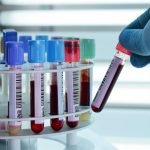A New Probiotic Frontier
Chris Decker, ND
I’d like to suggest that there’s a paradigm shift afoot regarding probiotics–a new frontier, if you will.
As we know, our human gut is home to a vast panoply of microorganisms, and in order to keep it that way we populate it with diverse species. But the old model that encourages the use of only lactic-acid based (LAB) products may be flawed and missing an important part of GI health.
It may in fact be time for us to go play in the mud! Seriously. More and more evidence suggests that the alarming increase in so-called diseases of civilization may be linked to our newfound lack of contact with the microorganisms that populate our very soil. We’re hunter-gatherers, after all, and throughout the entirety of our 2.6-million-year history we enjoyed an intimate contact with a whole diverse microbial world that’s largely vanished in our sterile, post-industrial civilization. These soil microbes likely trained our immune system to respond appropriately to exogenous stimuli, teaching it to adeptly distinguish potentially pathogenic invaders from harmless substances. In their teeming millions, they protected us from imbalance and overreaction and their sequelae of autoimmunity, allergy, and all manner of gastrointestinal compromise.1 Just look at the Hadza.
The Hadza people of Tanzania are the last true hunter-gatherers left in the world, and they’re consequently the most studied. Recently I had the pleasure of hearing Jeff Leach, founder of the Human Food Project, describe his time living with the Hadza and the findings of his team of researchers who study their microbiome, which is the most diverse on the planet. “The Hadza,” Leach told us, “live ground central for human evolution. You can throw a rock and hit Olduvai Gorge from here. They hunt the same animals, gather the same plants, dig the same tubers, are covered in the same soil, and drink the same water that humans have been evolving with for millions of years. … The microbes that turn on and off our [T] helper cells are right here in Tanzania.”2
I’ll skip the details about hands plunged into freshly killed antelope stomach and the eating, sushi-like, of raw colon, but suffice it to say Leach described what he called an “extraordinary exchange of microbes between a human and another animal.”2 Moreover, as Ramírez-Puebla et al. have shown, the plants we would have dug and otherwise harvested for food, harbor in their roots a complex microbiome analogous to that of the human gut and alongside which we evolved–and came to depend on. In their paper Gut and Root Microbiota Commonalities, the authors write that “gut and root bacteria regulate host gene expression, provide metabolic capabilities, essential nutrients, and protection against pathogens, and seem to share evolutionary trends.”3 This, to share Jeff Leach’s characterization, was the original social network.2
Research from ambitious endeavors like the Human Microbiome Project–a $100+ million NIH effort consisting of a consortium of 200 scientists from 80 universities around the world–has sought to characterize the human microbiome.2,4 Who’s really in there? While there’s a lot more work to be done, the answers so far offer some striking statistics.
Consider, for example, that there are more E. coli in our gut than there are people on earth.2 In our stocking feet we’re more than 90 percent microbe, a shelter for a miniature universe. Of the total number genes in our bodily house, some 23,000 belong expressly to us whereas10 to 20 million belong to our microbes.2 Three pounds of microorganisms protectively line our gastrointestinal tract, where some 80 percent of our immune function lies, a fact that may lend added credence to Hippocrates’ often-quoted observation that all diseases begin in the gut.
Indeed, say the people who study this field, there’s nary a health issue that’s not bug associated.2 IBS, Crohn’s, diverticulitis, autism, Alzheimer’s, type 1 diabetes and all other autoimmune diseases, and cardiovascular disease (which can commonly be linked with autoimmunity) have an association with the wide variety of Firmicutes, Bacteroides, Proteobacteria, and their compatriots that have been discovered to populate our gut. Even obesity may at least in part have a microbial etiology.2,5-8 Similarly, depression can result from the dysbiotic gut-inspired release of inflammatory cytokines, which then cross the blood brain barrier.9-11 Newborn infants, with their sterile little GI tracts, acquire their microflora during their passage through the vagina at birth. Delivery by cesarean section, which constitutes one third of US births (and 80 percent of private hospital births in China) deprives them of this opportunity. The resulting gut dysbiosis can lead to a host of illnesses, including autoimmune diseases like type 1 diabetes, and for this reason cesarean section has been called the number one public health problem exempting only infectious diseases.2 The list of health issues that can stem from an insufficient gut flora population goes on and on. Obviously this is something we need to pay attention to. And in turn, this acknowledgment begs certain questions about the probiotics we prescribe.
I’d like to suggest that, as a probiotic prescription, the same soil-based organisms that have so informed the course of our evolution also bring certain clinical advantages to the table that LAB organisms cannot, and that for this they deserve our consideration.
For one thing, soil-based organisms are appreciably hardier than LAB organisms, which are notoriously vulnerable to cell death in the upper gut.12 Every practitioner who prescribes LAB products makes a mental note to caution her or his patients about the dangers to their supplement of gastric acid exposure. Soil-based organisms do not exhibit this vulnerability.
In their paper Bacillus Probiotics, Dong, Van, and Cutting12 describe the nature of spore-forming soil bacteria, such as Bacillus subtilis. The authors write: “Bacterial spores are produced in nature as a means to survive extreme environmental conditions enabling long-term survival in conditions that could otherwise kill vegetative bacteria.” They say: “Spores being heat-stable have a number of advantages over other non-spore-formers such as Lactobacillus spp., namely, that the product can be stored at room temperature in a desiccated form without any deleterious effect on viability.” Thus, soil-based formulations do not require refrigeration. “A second advantage is that the spore is capable of surviving the low pH of the gastric barrier, which is not the case for all species of Lactobacillus, so in principle a specified dose of spores can be stored indefinitely without refrigeration and the entire dose of ingested bacteria will reach the small intestine intact.” Again, this is not the case with LAB products, which have a definite shelf life. Thus inherent viability, a characteristic of soil-based probiotics, may be preferable to the overcompensation that becomes necessary when one prescribes LAB products, the delivery of billions of colony forming units in the latter case being necessary in light of the heavy losses LAB organisms sustain during their transit through the GI tract.
Also, LAB organisms tend to be transient–and have transient effects–in comparison to soil-based organisms, which implant more securely. And they are in the minority, representing only a small fraction of the resident gut microflora.13
Probiotic organisms are team players. They work together in communities and exhibit a synergy well honed over billions of years of evolution. Supplementation by individual, cherry-picked organisms is questionably beneficial and possibly quite unpredictable clinically. On the other hand, a specially selected collection of soil-based probiotic species, representing as it does known mutualistic relationships among microorganisms, echoes time-honored animal-gut and plant-root microbial communality.3
The so-called prebiotics–often fructooligosaccharides (FOS)–that were historically a staple ingredient of LAB products are present less and less these days. To my mind, this is a welcome development. Especially when one is concerned with a distressed gut–a dysbiotic, sieve-like entity where beneficial flora are given a run for their money and are just as likely to be outnumbered as not–bacteria chow, in the form of prebiotics, is potentially likely to feed the wrong crowd. Although the prebiotics are intended for the beneficial species they enter with, all too often somebody else gets first dibs, which is why such substances are prohibited on the gut-healing GAPS nutritional protocol.14 The barometer of this unintended feeding of dysbiotic organisms is intestinal gas, and many a practitioner has considered ginger capsules a sine qua non of their probiotic prescription out of concern for their patients’ comfort.
With a soil-based organism formulation, it’s a different story. Here the microorganisms are accompanied by humic acid (in the form of Leonardite, for AG Leonard, the first director of the North Dakota Geological Survey).15 Humic substances are produced via the natural biodegradation over time of organic detritus–dead organic matter–and are the chief organic constituents of soil. Fulvic acids are a type of humic acid, marked by their lower molecular weight and higher oxygen content, and they readily diffuse through membranes.16 As Dethlefsen et al. observe in their paper An Ecological and Evolutionary Perspective on Human–Microbe Mutualism and Disease: “The shared evolutionary fate of humans and their symbiotic bacteria has selected for mutualistic interactions that are essential for human health, and ecological or genetic changes that uncouple this shared fate can result in disease. In this way, looking to ecological and evolutionary principles might provide new strategies for restoring and maintaining human health.”17 It’s probably safe to say that we humans have been around piles of decomposing leaves, rotting logs, and various other things that haven’t even been discovered yet and that we don’t want to know about for some considerable part of our history.
The efficacy of soil-based bacteria is also supported by clinical research. Bittner et al. evaluated a soil-based preparation for its utility in treating diarrhea of bacterial origin in two communities in Ecuador. According to the authors, the same preparation had previously acquitted itself well in the treatment of bacterial diarrhea in dogs in short-term studies and for human irritable bowel syndrome and related gastric diseases in both short-term studies and in a longer, one-year followup. In the Ecuadoran study, the soil-based preparation was shown to promote “significantly shorter diarrhea durations than standard antibiotics used in treating bacterial diarrhea.” The authors concluded that the bacteria in the soil-based formulation “have considerable promise as emerging treatments for a wide spectrum of acute and chronic GI diseases.”18-20
Now, lest it seem otherwise, let me make clear that I’m not suggesting that LAB probiotics have no utility or that we should abandon them wholesale in favor of soil-based organisms. I wouldn’t regularly prescribe them in my practice as I do if such were the case. There are not only very well thought out multi-strain LAB formulations on the market, but we have lactofermented foods available to us as well, and these, in terms of their probiotic oomph, I think are not to be sneezed at. Such preparations–and here I’m talking about kimchi, sauerkraut, fermented dill pickles and the like–are complex, sophisticated, biological entities (as well as being, just to mention it, more nutrient dense than their non-fermented counterparts–sauerkraut, for example, proffering some 20 times the vitamin C of non-fermented cabbage).14
What I would argue, however, is that LAB products can’t do everything–nor are they meant to. As the findings of major research undertakings like the Human Microbiome Project and the Human Food Project reach our ears, we all, I think, are gaining an increased appreciation for the significance to health of a thriving and diverse microbiome. Soil-based organisms are integral players in this scenario. After all, soil-based organisms have been our steadfast companions in evolution for more than 2 million years. And though we may live in Manhattan, we are still primal beings. Our genetics is still essentially identical to what it was 40,000 years ago.21 Soil-based organisms lie deep in our hunter-gatherer physiology, enveloping us like a warm blanket, inextricably intertwined with our ancestral past. But today, when most of us no longer forage our own food or have dealings with the antelope stomach or even play in mud–and when for the first time in the whole of our human history we’re forced to deal with an omnipresent toxicity so harsh our ancestors could have hardly imagined it–we need our old, soil-based microbial friends all the more.
 Chris Decker, ND, is a licensed naturopathic physician with offices in Vermont and Massachusetts. She is a member of the physician group Primal Docs, a Certified GAPS Practitioner, a homeopath, the chapter leader of the Northampton, MA, chapter of the Weston A. Price Foundation, and an advisor to Enviromedica, formerly LL Magnetic Clay, Inc. Dr. Decker is a former lecturer in the Department of Biochemistry and Molecular Biology at the University of Massachusets at Amherst. You can follow her blog at http://drchrisdecker.com/.
Chris Decker, ND, is a licensed naturopathic physician with offices in Vermont and Massachusetts. She is a member of the physician group Primal Docs, a Certified GAPS Practitioner, a homeopath, the chapter leader of the Northampton, MA, chapter of the Weston A. Price Foundation, and an advisor to Enviromedica, formerly LL Magnetic Clay, Inc. Dr. Decker is a former lecturer in the Department of Biochemistry and Molecular Biology at the University of Massachusets at Amherst. You can follow her blog at http://drchrisdecker.com/.
References
- Leach J. Dishing up the dirt that’s good to consume [article online]. The Sydney Morning Herald. June 27, 2012. http://www.smh.com.au/federal-politics/society-and-culture/dishing-up-the-dirt-thats-good-to-consume-20120626-210f8.html Accessed October 10, 2014.
- Leach J. Reconnecting with Our Ancestral Microbiome. Proceedings of the 2014 Vermont Traditional Foods and Health Symposium; September 25-27, 2014; Shelburne, VT [lecture available online]. https://www.youtube.com/watch?v=yY34qzDpESk Accessed October 9, 2014.
- Ramírez-Puebla ST, Servín-Garcidueñas LE, Jiménez-Marín B, et al. Gut and root microbiota commonalities. Appl. Environ. Microbiol. 2013;79(1):2-9.
- Human Microbiome Project, The. Structure, function and diversity of the healthy human microbiome. Nature 2012;486(7402):207-14.
- Turnbaugh PJ, Ley RE, Mahowald M a, Magrini V, Mardis ER, Gordon JI. An obesity-associated gut microbiome with increased capacity for energy harvest. Nature 2006;444(7122):1027-31.
- Walker AK, Sun TB. Gut bacteria linked to obesity-related health problems. Baltimore Sun. April 12, 2012.
- Ley RE, Bäckhed F, Turnbaugh P, Lozupone C a, Knight RD, Gordon JI. Obesity alters gut microbial ecology. Proc. Natl. Acad. Sci. U. S. A. 2005;102(31):11070-5.
- Tlaskalová-Hogenová H, Stěpánková R, Kozáková H, et al. The role of gut microbiota (commensal bacteria) and the mucosal barrier in the pathogenesis of inflammatory and autoimmune diseases and cancer: contribution of germ-free and gnotobiotic animal models of human diseases. Cell. Mol. Immunol. 2011;8(2):110-20.
- Maes M, Kubera M, Leunis J-C. The gut-brain barrier in major depression: intestinal mucosal dysfunction with an increased translocation of LPS from gram negative enterobacteria (leaky gut) plays a role in the inflammatory pathophysiology of depression. Neuro Endocrinol. Lett. 2008;29(1):117-24.
- Foster JA, McVey Neufeld K-A. Gut-brain axis: how the microbiome influences anxiety and depression. Trends Neurosci. 2013;36(5):305-12.
- Kresser C. 5 uncommon uses for probiotics [article online]. July 2013. http://chriskresser.com/5-uncommon-uses-for-probiotics Accessed October 10, 2014.
- Dong TC, Cutting SM, Van PH. Bacillus Probiotics. Nutra Foods 2009;8:7-14.
- Segata, N, Haake, SK, Mannon P, et al. Composition of the adult digestive tract bacterial microbiome based on seven mouth surfaces, tonsils, throat and stool samples. Genome Biology. 2012;13(6): R42.
- Campbell-McBride N. Gut and Psychology Syndrome. Natural Treatment for Autism, Dyspraxia, ADD, Dyslexia, ADHD, Depression, Schizophrenia. Revised edition. Cambridge, England: Medinform; 2011.
- Wikipedia. Leonardite [article online]. January 1, 2013. http://en.wikipedia.org/wiki/Leonardite . Accessed October 10, 2014.
- Wikipedia. Humic acid [article online]. July 2, 2014. http://en.wikipedia.org/wiki/Humic_acid Accessed October 10, 2014.
- Dethlefsen L, McFall-Ngai M, Relman D. An ecological and evolutionary perspective on human-microbe mutualism and disease. Nature 2007;449(7164):811-8.
- Bittner AC, Croffut RM, Stranahan MC. Prescript-Assist probiotic-prebiotic treatment for irritable bowel syndrome: a methodologically oriented, 2-week, randomized, placebo-controlled, double-blind clinical study. Clin. Ther. 2005;27(6):755-61.
- Bittner AC, Croffut RM, Stranahan MC, Yokelson TN. Prescript-assist probiotic-prebiotic treatment for irritable bowel syndrome: an open-label, partially controlled, 1-year extension of a previously published controlled clinical trial. Clin. Ther. 2007;29(6):1153-60.
- Bittner AC, Caicedo R De la Torre T, Yokelson, TN. Tratamiento con Prescript-AssistTM probiótico-prebiótico para la diarrea bacteriana: Experiencia clínica en el Ecuador. Prensa Médica Argent. 2007; 94, 195-202
- Gedgaudas NT. Primal Body, Primal Mind: Beyond the Paleo Diet for Total Health and a Longer Life. Rochester, VT: Healing Arts Press; 2011, p. 4.










